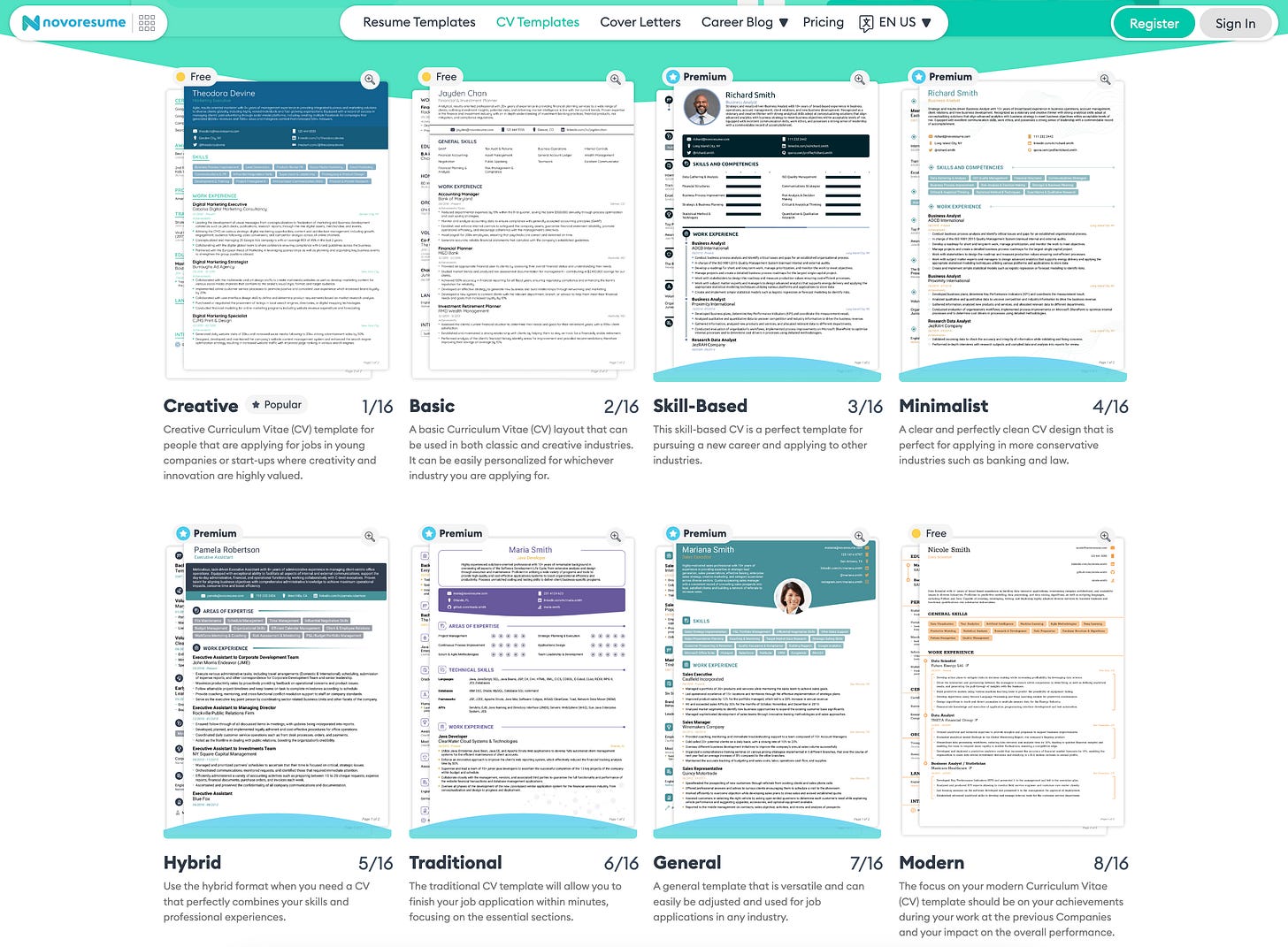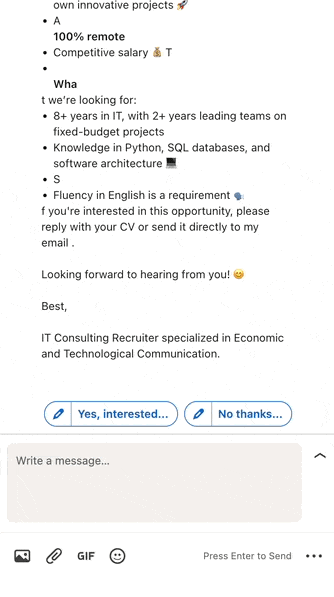It took me 2 years to get my first client as an independent freelancer.
For my second client, it took 6 months.
For the third, 6 weeks.
After years of trial and error, I’ve reached a point where I can structure, define and document this process, for others to use. Given this period of layoffs, industry shifts and people not finding work, maybe these tips can help some find work. However, take it with a grain of salt; I haven’t looked for new clients since 2023. My final two contracts were long-term, and one developed into a small software services business.
I’ll structure the process into 4 time intervals:
🎒 Setup, preparation: Setup, pre-conditions, what you should do before starting
📢 Marketing, reaching out, finding potential clients: How to look for companies that want to work with you
👥 Sales, talking to clients: Sales, persuasion, honesty, negotiation, if you can call it that
🤝✍ Signing: What happens after a client accepts
In this article, I’ll dive into the first step: what to do before you start looking.
1. Setup. Preparation. Pre-conditions.
1.0. Pre-requisites, pre-conditions
Here you need some experience. Enough to work independently. Enough for the company to make a profit off your work, enough that you don’t require mentoring anymore. And if a company can profit off your work, so can you.
Keep in mind, that just because you don’t need mentoring, doesn’t mean some mentoring wouldn’t help. Growth should be a lifelong journey.
1.1. A well-done resume.
I’ve tried a few resume variations. More project information, standard Europass format, less project information, standard LinkedIn export, meh, meh, meh. Then I looked into how others were doing and also tried some tools which turned a LinkedIn export into a colourful resume. The moment it clicked that I was on to something was when recruiters started complimenting it in calls.
Here are 5 elements which I consider helpful here:
1.1.1. What I've noticed effective is describing as many projects as possible with 3 sections: technologies, responsibilities, and achievements.
1.1.2. And use NUMBERS when describing these sections. I can't emphasize it enough. Quantify what you've done as much as possible. Examples:
💼 Responsibilities: - Technical leadership for team of 5-7 developers - Structured team workflow for improved deliverability and predictability (from 10% SP to 60% SP delivered) - Deliver microservices for key business features, high-processing of events (~1000events/sec, ~10sec pipeline total analysis time) 🎯 Accomplishments: - Improved SCRUM workflow and guidelines in 4 teams of 5-7 developers each, and enable metrics, charts; increased by 60-70% predictability of delivered work; all while increasing autonomy of all 4 teams - Developed business features for analytics on statistics pipeline which grew from 8 to 12 microservices, while keeping NFR and high event processing parameters - Scaled up 2 future team leads for handover
1.1.3. When writing your CV, make sure you answer these 2 questions for anyone reading it:
What value do you bring to the client? What can the client expect you to solve if they hire you?
1.1.4. For the love of Linux, have a decent design! Here are 2 CV builders:
Codersrank (a very cool free LinkedIn to CV generator, I use this)
Novoresume (paid)
1.1.5. Injected AI prompts 🤖 (optional)
Your CV might be bulk analyzed by an AI, rather than a human being reading them individually. In all honesty, given hundreds of CVs and AI tools available online, wouldn’t you use this?
So although I didn’t do this, perhaps injecting a prompt to make your CV stand out might help. Tread carefully. Use white font.
1.2. A short verbal presentation
So often I’d get asked to describe myself in meetings. And every time I’d start with “ummm…”. Some descriptions yielded more enthusiasm than others. So I tried practicing a presentation. After a few tries, a few interesting things happened: the response was better, the follow-up questions less and less, I was more confident, and because I knew beforehand what I’d say, less tired after each call.
Prepare what to say about yourself in 2 minutes. Take what you have most impressive. Iterate over presentations with different clients, and see what catches their ears. Prepare to answer the question: "Tell me about yourself" well in advance. Every minute saved will help.
This may seem difficult and cringe-worthy at first, especially for knowledge workers. But I promise it’s an investment worth it.
And you know what would add to the discomfort, but help? Recording it 🎥. This is useful for potential clients and saves everyone a lot of “Short coffee” introductions.
This took me weeks to do. Weeks of preparation to talk in front of a camera. Convincing myself this would help in the long run. Hearing myself after each recording, thinking “Is that what I sound like? Is this a good idea?”. If you’re having doubts here, know you’re not the first.
1.3. Timing
The first time I lost a contract was during a month-long work-away in Lisbon. It was summer. It was also the first time a client was ending the contract, not me. After clarifying it wasn’t for performance reasons, phew, I started to look.
And even though I was getting some replies, they were few, scarce, and often took days in between. So I got the courage and asked a few of them what was up. And I got multiple identical replies: “Well it’s the holidays".
So I gave it a couple of extra weeks. As September rolled in, companies which I’d discussed with in early August started messaging me. By mid-September, I already had offers on the table. Lesson learned: July, August and December are slow months. If you’re looking for jobs in this period, I’d rather advise
There are a few key months for the start of the fiscal year:
January and February are generally used for the start of fiscal years, as well as
October is a fairly used month in Western countries
April in the UK, Japan, and India (less common)
Around the time when the fiscal year starts, there will be an increase in the level of interest in the market. I've noticed this in September and October when people return from vacation; and in January and February after the holidays.
So those would be key times to start looking for new collaborations.
1.4. Calendly 💙
Set up a free Calendly account, or an equivalent tool.
At certain time slots, anyone with a link can add a meeting with you. It syncs with your calendar automatically, so others can only schedule when you're available.
1.4.1. You might need to clear up your current calendar.
When I started using Calendly, all my days appeared unavailable because my imported Facebook birthdays were booked as whole-day busy events.
For situations like this, you can use Bulk Edit Calendar Events.
1.5. Briskine 💚
Responding to messages for possible opportunities became surprisingly time and energy-consuming. And it was always the same 4-5 types of responses. I always had to write them again and again, and context-switching was getting to me.
So I looked for a solution to my problem and found Briskine - a browser plugin which automatically writes templated messages and auto-fills information such as the name of the person.
You can set up several message templates and a keyword for each, and when you type the keyword + TAB it will automatically write the entire message, along with the person's name.
It allows you to reply to many messages in a short time.
1.6. Dedicated work email (optional)
Recruiters and agencies will add your email to online email databases. Yes, even with GDPR.
You might end up getting random job offers in your inbox, but also random ads and promotions. Plusses and minuses. So it can be useful to have a separate email address for all this jazz.
Back in the day, I didn’t have a separate email, but nowadays I would avoid using my personal email.
If you also have a domain of your own, that looks even more professional.
If you found this useful, let me know below! I’ll make sure to return with…
… part 2: How I did marketing.











Jeez this is great.
How were you managing yourself during the 2 year search for your first client? Sounds nerve wracking
Great article, thanks